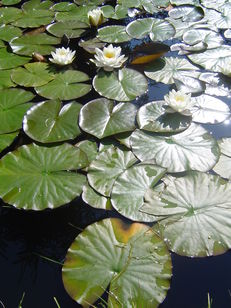Managing a Pond
Most ponds will require some degree of management but their inherent diversity means that no one management prescription fits all.
You may need a conservation license if you find a rare species in your pond such as the great crested newt. Contact your Statutory Nature Conservation Organisation for advice.
Make sure your management is well informed. The greatest threat to your pond and the species that live there may be misguided management. Any changes you make must be fully understood.
Autumn is usually the best time to undertake any management work. This will minimise damage to plant and animal communities.
Reduce dominating vegetation but don’t over manage your pond. One type of vegetation, such as reed mace or phragmites, may dominate your pond especially in the early years. Remove excess vegetation, preferably by hand to ensure that no species are lost. Always leave the removed weed beside the pond for 24 hours to allow any trapped invertebrates to return to the water. Don’t allow the material to rot there or nutrients will leach back into the pond and cause problems with algae.
Don’t worry too much about fallen leaves. People are often concerned about fallen leaves in ponds. Large amounts of leaves can be removed if they overwhelm your pond, but remember that they also provide food and shelter for many species.
Allow seasonal water fluctuations, which would occur in a natural pond. Ensure the liner is not exposed to the sun by covering it with gravel, pebbles, soil or turf.
Protect your pond. You may need to install a bund to ensure protection from pollution run-off.





 Except where otherwise stated, content on this site is
licensed under a Creative Commons Attribution 3.0 License.
Except where otherwise stated, content on this site is
licensed under a Creative Commons Attribution 3.0 License.
